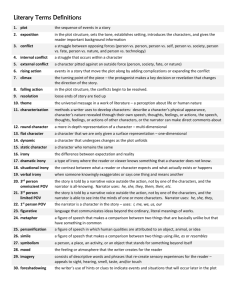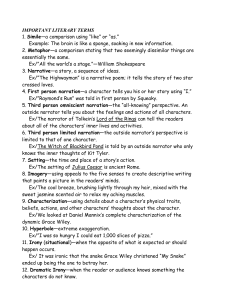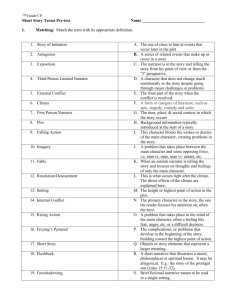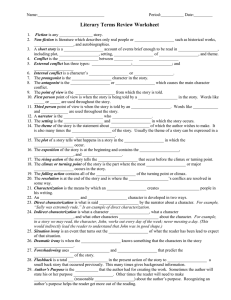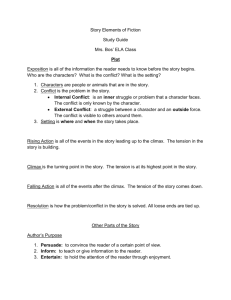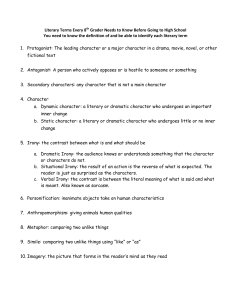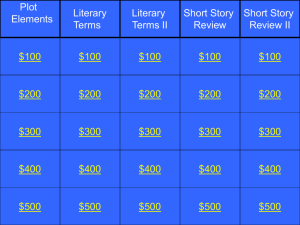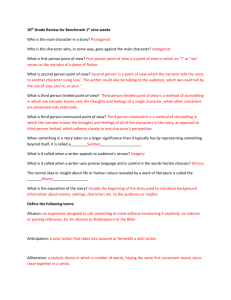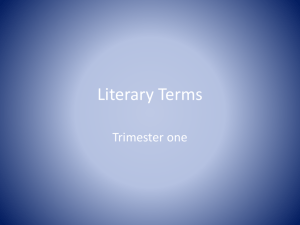Literary Term Flash Cards
advertisement
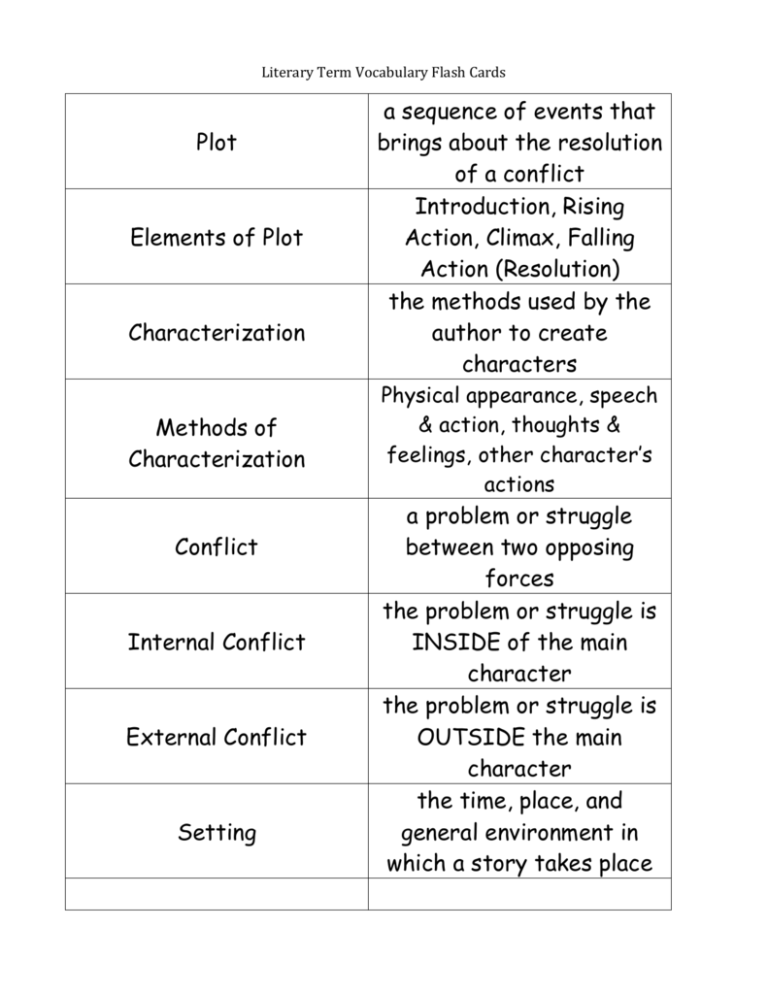
Literary Term Vocabulary Flash Cards Plot Elements of Plot Characterization Methods of Characterization Conflict Internal Conflict External Conflict Setting a sequence of events that brings about the resolution of a conflict Introduction, Rising Action, Climax, Falling Action (Resolution) the methods used by the author to create characters Physical appearance, speech & action, thoughts & feelings, other character’s actions a problem or struggle between two opposing forces the problem or struggle is INSIDE of the main character the problem or struggle is OUTSIDE the main character the time, place, and general environment in which a story takes place Figurative Language language expanded beyond its ordinary literal meaning Rhyme a concrete object that represents an abstract idea an implied comparison of two unlike things that does not use “like” or “as” a comparison of two unlike things that does use “like” or “as” repeated consonant sounds occurring at the beginning of words or within words the repetition of syllable sounds Rhythm the pattern of stresses and unstressed syllables Symbolism Metaphor Simile Alliteration Irony Situation Irony the difference between what appears to be and what actually is an outcome, which is the opposite of what was expected. It is a surprise! Dramatic Irony Verbal Irony Theme Stereotype Foreshadowing Flashback when a reader, or viewer, knows more about a situation than the characters involved saying the opposite of what was meant for humorous or sarcastic effect the main idea; the underlying message the author wants the reader to think about a broad generalization about something or someone that leaves no room for individual differences an author’s use of hints or clues to suggest events that will occur later in the story an interruption to a story to present an earlier event Mood a reasonable conclusion drawn by the reader from author’s clues the overall feeling of a work of art or literature Imagery concrete details appealing to the senses Inference Climax the moment in which the conflict is solved in either a good or bad way; always toward the end of a story Point of View the author’s choice of narrator First Person the narrator is a character INSIDE the story Third Person Third Person Objective Third Person Omniscient the narrator is a character OUTSIDE of the story; the narrator is not participating in the plot the narrator only reports speech and action the narrator reports thoughts, feeling, speech, and actions

